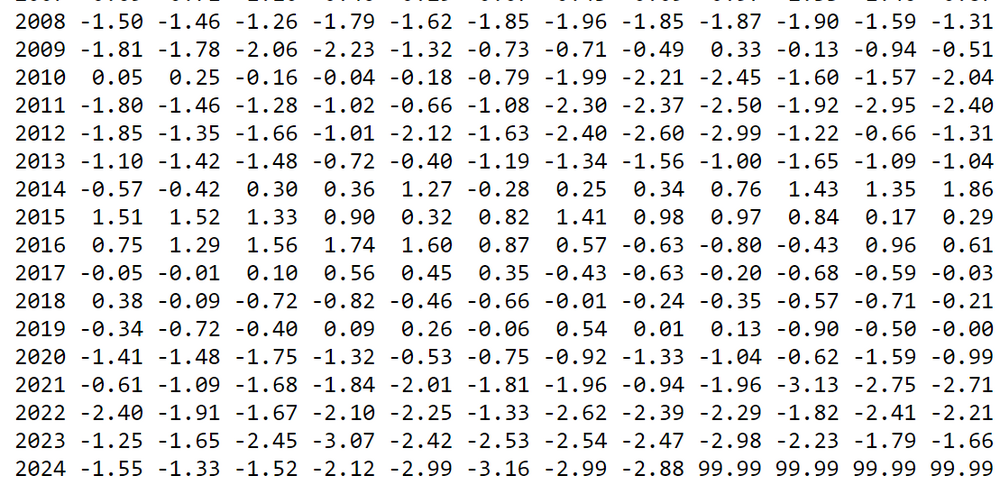
so_whats_happening
Meteorologist-
Posts
1,462 -
Joined
-
Last visited
Content Type
Profiles
Blogs
Forums
American Weather
Media Demo
Store
Gallery
Everything posted by so_whats_happening
-
2024-2025 La Nina
so_whats_happening replied to George001's topic in Weather Forecasting and Discussion
Yep was reading about the other day. PSL products are also being affected. Hope they can get everything situated relatively quick. -
2024-2025 La Nina
so_whats_happening replied to George001's topic in Weather Forecasting and Discussion
The OISST has not updated in 5 days. -
2024-2025 La Nina
so_whats_happening replied to George001's topic in Weather Forecasting and Discussion
As for Tropical activity there may be two systems in the next week, the wave in the Atlantic looks really nice right now which should be the main show. Still early overall but it looks like a recurve as of now is the likely and at least a Hurricane. Most models have some type of recurve and moderate strength. Then another little system in the gulf may develop into a named system probably wont get much past that. Of course looking forward it looks as though the Atlantic will be weakly open for business if a nice wave can come off the African coast but Caribbean and Gulf may be shut off for a bit. We get a push back into weak 4/5/6 probably close to mid month as we go into null by next weekend with the easterlies picking up and a little VP push. I mean it really sucks to see runs like the 00z Euro North America view and we are only in October. It gives me hope but feel I need to dial that back in a bit unfortunately. -
2024-2025 La Nina
so_whats_happening replied to George001's topic in Weather Forecasting and Discussion
This storm was very much how Michael developed 6 years ago and had such a better opportunity to go all out then Debby did due to track, If Debby had a little less land interaction initially like Helene did it could have done similar. This was the Satellite loop for Debby when it got the opportunity to get going into the Gulf. https://rammb-data.cira.colostate.edu/tc_realtime/loop.asp?product=4kmirimg&storm_identifier=al042024&starting_image=2024al04_4kmirimg_202408021340.gif&ending_image=2024al04_4kmirimg_202408051806.gif Ernesto did pretty well but came up just short too for a major hurricane, surprisingly VP was not good for a phase 1 passage. So location of the storm being east of the warmest regions limited the overall strength with that system. Here is the VP of Debby, Ernesto, and Helene. The VP overall this summer has been against us from opening the Atlantic up fully but these weak breaks in the overall positive VP setup from 7/1- 8/31 have yielded several storms. -
2024-2025 La Nina
so_whats_happening replied to George001's topic in Weather Forecasting and Discussion
These waters do not warm this time of year, rather they tend to just not cool off as much. I do find it interesting to see the anomalies start the uptick though in Bering sea and sea of Okhotsk. Will have to keep a monitor on how this goes in the coming month or so. -
Definitely been a concern of mine. It looks as though it finally was able to kick out most of the dry air and may need only a 6 hour window coming up of convection wrapping around fully and then it takes off... We are within about 1 day of landfall and the time from now until it peaks is crucial. If it happens quick there is still a small chance of it but maybe not enough if it happens around daytime and throughout the day tomorrow not gonna be pretty.
-
2024-2025 La Nina
so_whats_happening replied to George001's topic in Weather Forecasting and Discussion
-
Arctic Sea Ice Extent, Area, and Volume
so_whats_happening replied to ORH_wxman's topic in Climate Change
It looks like we have just about hit the bottom for extent and area has started to see a nice uptick since the beginning of the month. Probably have a some refreezing happening in the next week start to show up? It is possible this waits until the beginning of October to start the process. Lotta warmth still running around. -
2024-2025 La Nina
so_whats_happening replied to George001's topic in Weather Forecasting and Discussion
Honestly I still like this look for an overall guess to the winter. I would expect the warmth in the south to be a bit more bulbous with an episode or two of SE Ridge flaring up and a dislodged -NAO. Again as much as I would like a pure -NAO winter season it doesn't seem very likely. Temps would likely be about 1-2C warmer but the general idea is there. -
2024-2025 La Nina
so_whats_happening replied to George001's topic in Weather Forecasting and Discussion
This is the first time in about 6 years we have had a +NAO summer. Most have been neutral for a month and mostly negative overall. The last time we had a positive NAO summer was 2017 and 2018 and before that 2013. Folks draw whatever they want from that sample set but notably 2013 was the only other one in the last 15 or so years that has had high solar as well as a +QBO pattern to boot. Im sure ill get the usual commentary of the SST patterns were entirely different. I get it not everything will be perfect as much as I would love it to be (would make things a hell of a lot easier). -
2024-2025 La Nina
so_whats_happening replied to George001's topic in Weather Forecasting and Discussion
The lowest monthly ever recorded was actually April of 1859 and July of 1950 where we bottomed out at -3.65 for a monthly value but at that point we are looking rather far into the past and the symmetry of pattern evolution may not be there. My guess for this year is we get the continuum of central plains/ front range cold dumps. With having a SE Ridge pop up from time to time but as of now nothing in the extreme department from my perspective. Definitely feels like a relaxation for this intense east coast warmth during winter but still averaging above average for the season overall (just not +6 maybe more like +1 to+2). Ill gladly take something else for a change but persistence has been great so far this year, so far last month and so far September have been the only bigger anomalies this year for temps in the east. -
2024-2025 La Nina
so_whats_happening replied to George001's topic in Weather Forecasting and Discussion
Yea it is possible, if this would happen it would surpass 2011 and start to rival the one month anomaly of Oct 1955 where we got to -3.35. Fairly similar placement as for the most extreme SST anoms. How have the models faired so far in extended forecasts? Just curious this is not something I follow all too often. -
2024-2025 La Nina
so_whats_happening replied to George001's topic in Weather Forecasting and Discussion
It was around the end of September when we saw the 500mb pattern take hold and SST configurations sort of lock in. It will be interesting to see what the next 3 weeks looks like. -
2024-2025 La Nina
so_whats_happening replied to George001's topic in Weather Forecasting and Discussion
I wanted to add the end of summer comparison to last year I have in stock. This new one starts on 9/6 to 12/4. The warm anomalies are east of where they were at the start of September last year so we are seeing a shift occur not as intense around Japan but still very warm in many regions around Japan. -
2024-2025 La Nina
so_whats_happening replied to George001's topic in Weather Forecasting and Discussion
It is a possibility for maybe having the extreme anomaly presence, as far we know the NW Atlantic does not have major seismic activity. So when the Atlantic and Pacific have mirror looks it makes me have pause that could be the situation. The NW Atlantic has a more shallow depth region so that may play a role in having a mirror look to the Pacific without the Seismic influence. Honestly though it is a mystery as of now why the pattern is pushing extremes and what exactly it will take to rid us of this pattern. The tropical activity early on put dents into it here and there but has since smoothed out the area just NE of Japan I am curious about the storm track this year and how much change will occur over winter. -
2024-2025 La Nina
so_whats_happening replied to George001's topic in Weather Forecasting and Discussion
Some rather significant weakening in the VP anomalies around the Maritime coming up on just about every model. This may be a rather brief but exceptional opening of the Atlantic/ Caribbean to tropical activity closing out the month into October. Pretty decent cooling of waters to now just slightly above average around Malaysia (I think that is the country 120E, ~15N). This is also the most impressive the Nina has looked thus far. -
2024-2025 La Nina
so_whats_happening replied to George001's topic in Weather Forecasting and Discussion
Ok now lets just translate this to 3 months from now... lol It still does amaze me we can get better patterns in the off seasons then when winter hits it is like brick wall of nope. -
2024-2025 La Nina
so_whats_happening replied to George001's topic in Weather Forecasting and Discussion
Here is the TAO and CPC update for subsurface. Again interesting to see the differences between TAO and CPC even going from 2N-2S to 5N-5S look. You can see the relaxation in both though through August. The TAO data has less operational buoys in the east (I believe they can turn these on and off remotely, unless they are doing maintenance) so it gives the subsurface depiction a different look from CPC. -
2024-2025 La Nina
so_whats_happening replied to George001's topic in Weather Forecasting and Discussion
Slightly down for the PDO in August numbers. Probably has to do with some weakening/moving of the warm blob around Japan and the eastern portions (NE PAC) virtually neutral. Let see how it goes into the rest of Fall, probably won't go below -2 the rest of the year without a big surprise which seems unlikely unless we get a very solid -WPO pattern set up. -
Beautiful radar presentation. Might be able to achieve low end cat 2 status briefly.
-
2024-2025 La Nina
so_whats_happening replied to George001's topic in Weather Forecasting and Discussion
I am unsure. I do my best to pay attention to what folks say in here but I unfortunately have a lot going on outside of this to where I can only keep up so much. -
2024-2025 La Nina
so_whats_happening replied to George001's topic in Weather Forecasting and Discussion
It was a rather massive change in SST's that year alot can still happen. -
2024-2025 La Nina
so_whats_happening replied to George001's topic in Weather Forecasting and Discussion
Also besides the tropical system near the Bay of Campeche, which may become a hurricane if it can spend enough time over waters, we should see at least one more tropical system form in the Atlantic within the next week given the relaxation in the positive VP that has plagued us this year. Honestly it probably is a good thing, most folks do not want to deal with intense tropical activity especially since insurance is through the roof in many locations along the Gulf coast. Current forecast and looking at past relaxations of +VP over the Atlantic they match up pretty well to a system being able to get going. Next potential if forecast holds up would be into the end of the month. -
2024-2025 La Nina
so_whats_happening replied to George001's topic in Weather Forecasting and Discussion
2007 is a bit off to me but here is the 500mb pattern for August/September. That year we had a late developing WQBO pattern, rather low solar year, the PDO was rather neutral except a random spike negative around October, subsurface was an ok match, the hurricane season put on quite the show. So it has some similarities maybe an anti 2007 would be better?



.thumb.gif.143238ff5e9ef0f004b015c0f3b06d23.gif)
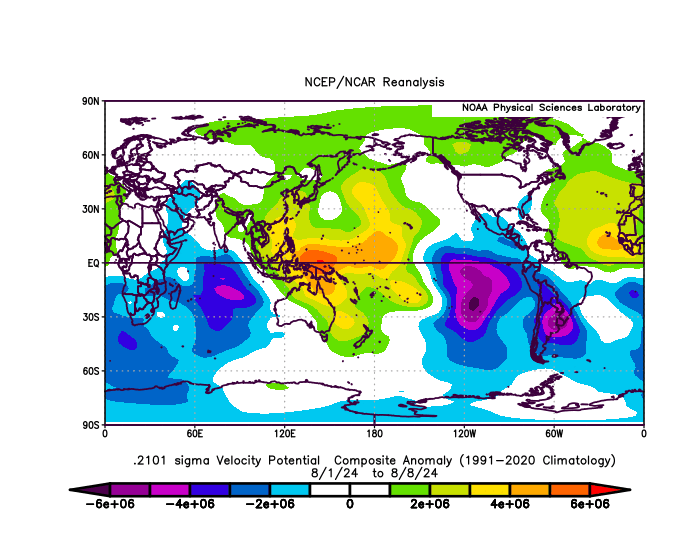
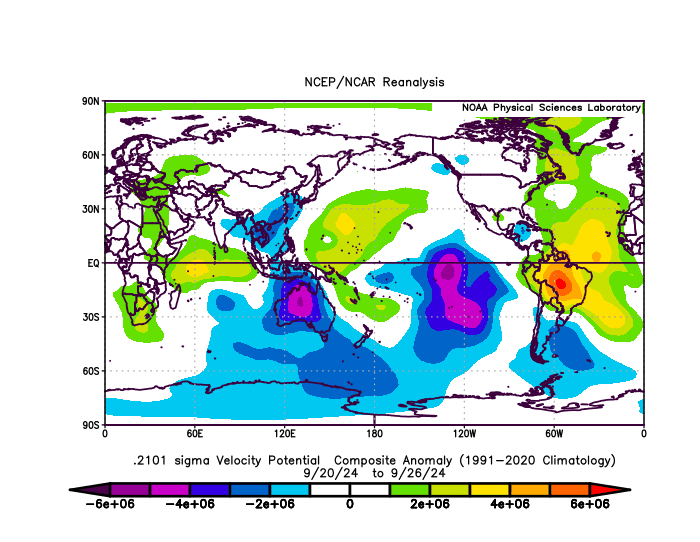
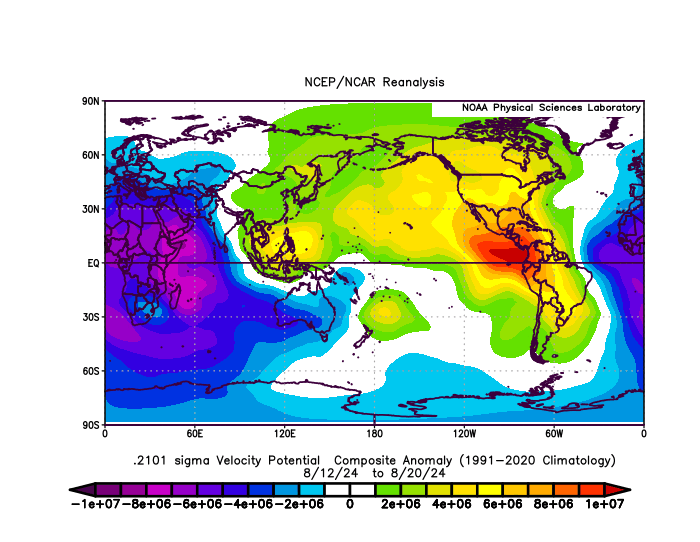
.thumb.gif.3d37864f6432d8ab3c3d6f16ac772492.gif)
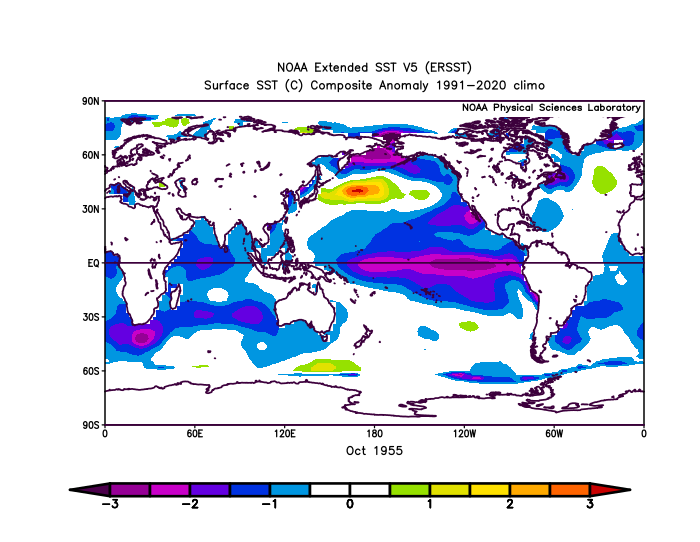
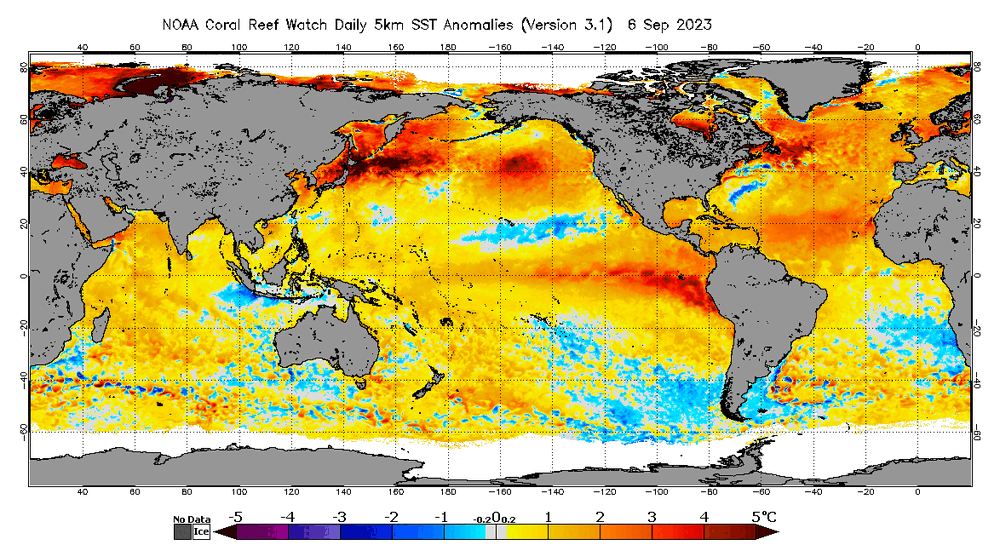
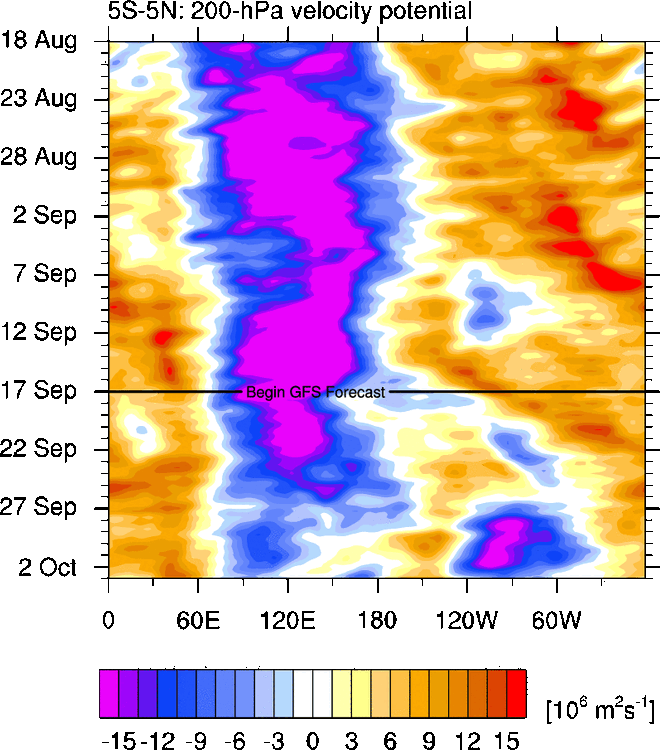
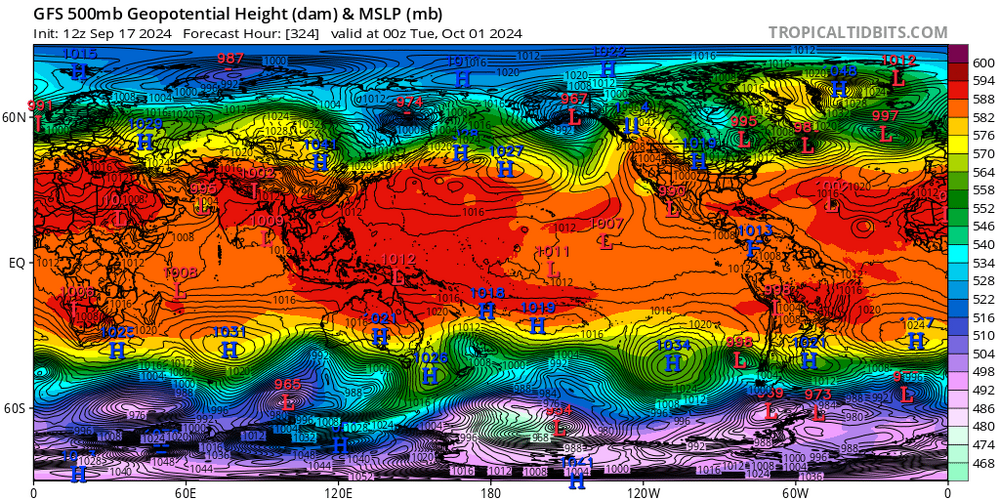

.thumb.gif.a7366b7a6e823dd21415733c6d3b6e60.gif)
.gif.e6d74cefa185b69a04b23844051b20fe.gif)
